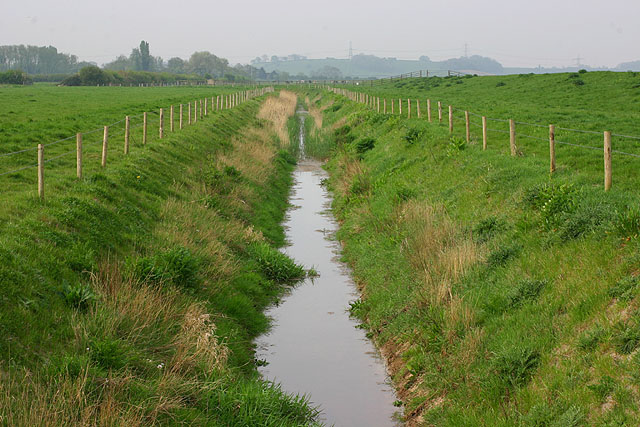Dyke
|
This drainage dyke near the River Severn runs parallel to the waterway. |
Contents |
[edit] Introduction
As an engineering term, a dyke is a form of flood protection designed to keep seawater or river water from overrunning land that is adjacent to it. Dykes are usually permanent structures that are built in areas that are located below sea level and are thus uninhabitable. Their placement reclaims land to make it fit for use.
In certain situations, temporary dykes can be built to divert water from areas that have been disturbed as a result of natural or human activity. These structures direct water to a more suitable location. They can also help to reduce the flow of water to control issues associated with erosion.
[edit] Related terms and usage
In North America, the standard spelling is dike; in other English speaking countries, the common spelling is dyke. Both spellings are widely used and accepted.
Outside of engineering applications, the terms levee and dyke are sometimes used interchangeably.
NB In geology, a dyke is a sheet of rock within the cut surface of another type of rock.
[edit] Levee
A levee (also sometimes referred to as a floodbank or stopbank) is an artificial structure used to control water levels. Levees are generally put in place to protect dry land from rivers that become a threat due to flooding. They can be permanent structures, such as those built from cement, or temporary structures which might be made from stone, earth or sandbags.
In Ancient Egypt, levees were used along the Nile to protect the surrounding valleys. They were also used in other Ancient cultures.
See Levee.
[edit] Gully
A gully can serve the same purpose as a dyke. Earthen gullies, stone lined ditches or naturally occurring rock formations that run parallel to the water source can serve as dykes.
See Gully.
[edit] Berm
Defined as a shelf or raised barrier separating two areas, a berm is another term that is sometimes used interchangeably with dyke. Since a berm is not always associated with flood control, it is not the same as a dyke, but a dyke can be a type of berm if it built as a raised barrier.
See Berm.
[edit] History
In many cases, the usage of these terms is regionally influenced. For example, in the state of Louisiana (which is vulnerable to flooding of rivers prompted by hurricanes), the term levee is most frequently used. In the lowlands of the Netherlands (which have been reclaimed from the sea), dyke is the common term.
It is believed that the term dyke originates from the Dutch word dijk, which was used to describe both the ditch and the walls created to support it. Early references to the term dijk were found in Northern European records in the 11th century, but there are other references that appear even earlier - perhaps as far back as 500 BC.
During that period, the population grew in the northwestern region of what is now the Netherlands. Although much of the land was below sea level, engineers set about making it suitable for human habitation through extensive hydraulic engineering.
The construction of simple dykes was a central part of the land reclamation process which began in the 13th century. This effort increased through the centuries and has resulted in the creation of large areas of reclaimed land referred to as polders.
See Polders.
[edit] Dykes in England
The term dick was used instead of dyke in Northern England. In this part of the country, the term dyke may also be associated with a dry stone field wall. This is the case in Scotland as well, where the term dry stane (or drystane) dyke is also associated with a dry stone wall or dyke. These constructions are often used to establish boundaries for fields. The workers who build these structures are sometimes referred to as dykers.
In the Midlands and East Anglia, the term dyke was used, while ditch was used in Southern England. In addition to referring to a drainage channel, these terms are also associated with property boundary markers - as they are in Scotland. When used to control the flow of water (as a dyke or ditch), they are sometimes referred to as running dykes.
Associated terms include soak dyke (in The Fens) and sock dyke (in Lincolnshire).
There are also spur dykes, which are built to protect land from erosion. These are commonly found near coastlines and can be constructed either perpendicular to, or at an angle to, the bank. Spur dykes can be permeable or impermeable. They are generally made from material such as loose stones or bricks and contained by wire. Longer spur dykes are sometimes referred to as groynes.
See Groynes
[edit] Related articles on Designing Buildings
Surrey Hills Directory
[edit] Planning
Building Design in the Surrey Hills
[edit] Highways
Conserving and Enhancing Country Lanes in the Surrey Hills AONB
[edit] Biodiversity & Landscape
Landscapes Review: National Parks & AONBs 2019
Light Pollution - Threat to Migrating Birds
Making Local Nature Recovery Strategies deliver
[edit] Health & Wellbeing
Nature and Wellbeing: The Evidence
How nature can be used to improve wellbeing







